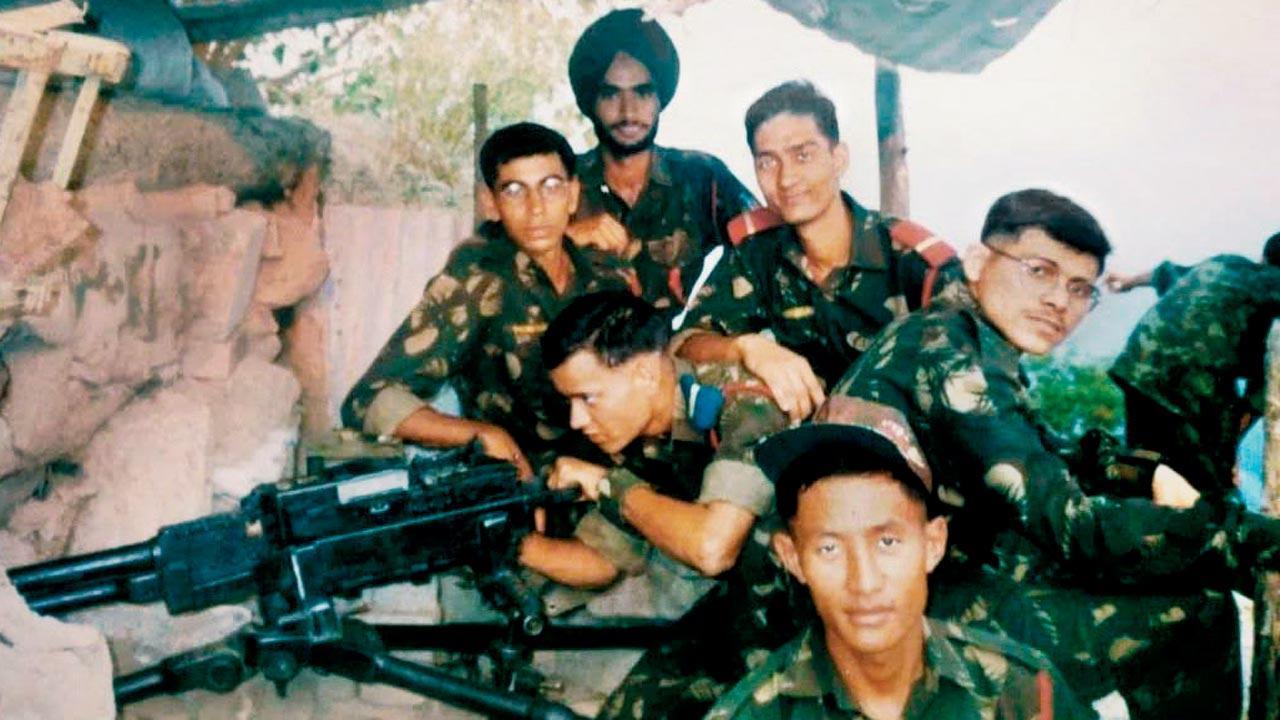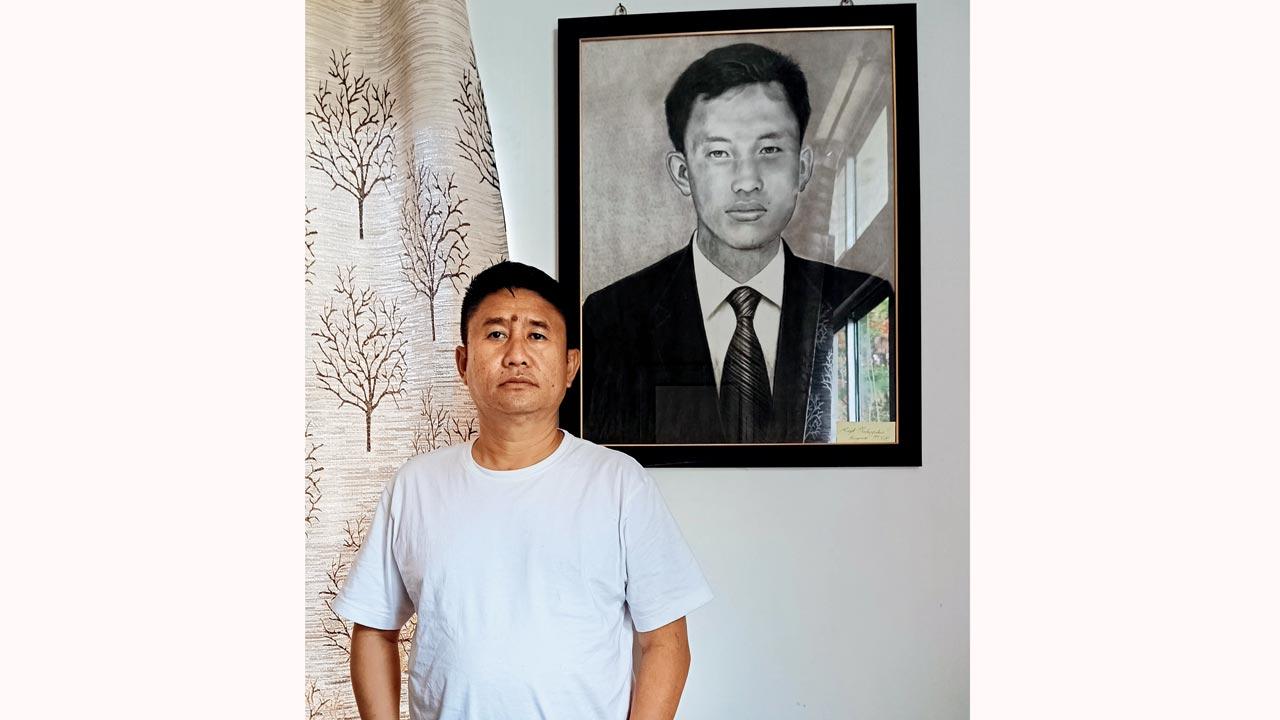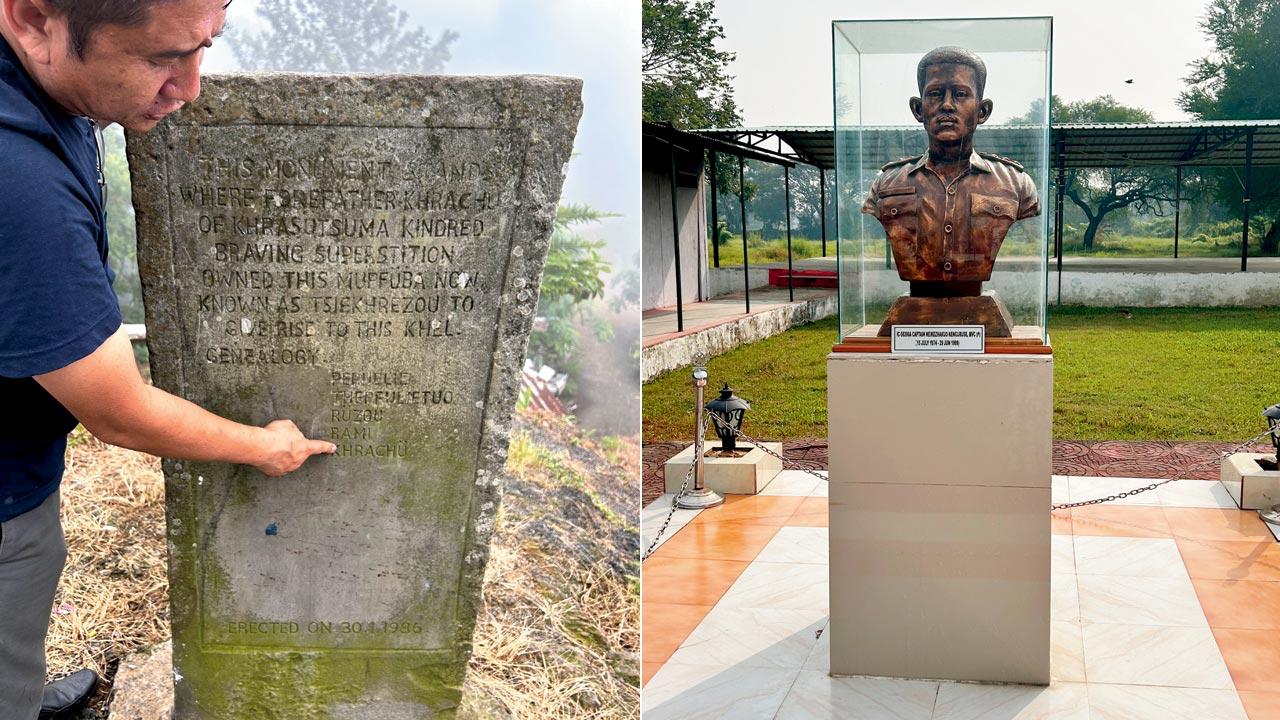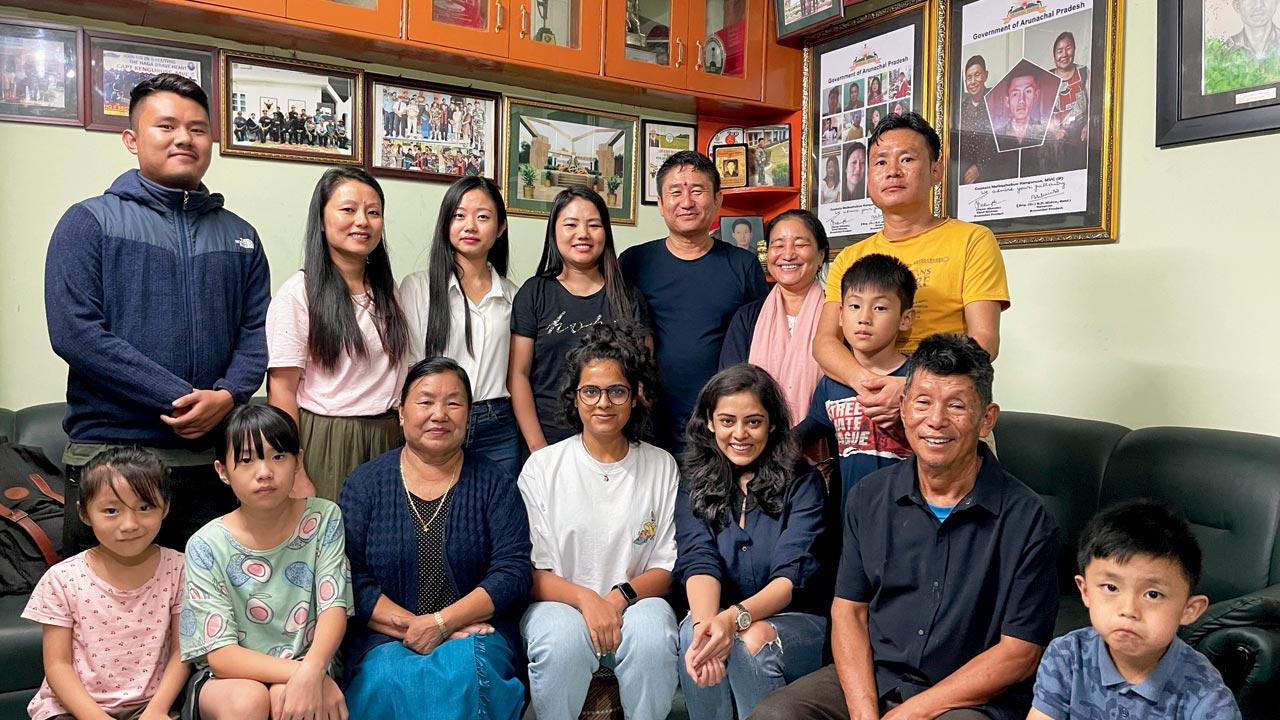A new book, written by the daughters of a Kargil War martyr, tells the story of another little-known hero, Captain Neikezhakuo

Captain Neikezhakuo Kengurüse belonged to the second Battalion of the Rajputana Rifles, which played a crucial role in defending Point 4590 during the Kargil War
Whenever there is chicken on the dining table, Neingutoulie Kengurüse remembers his brother Captain Neikezhakuo’s favourite part was the wings. “He was always advising me,” says the 50-year-old secondary school teacher, “And this stage, I knew he would have many words of guidance for me on how to approach people, how to talk to people.”
ADVERTISEMENT
Kenguruse, a businessman, is fighting for a seat in the Dimapur civic polls in his native Nagaland. And his brother, Captain Neikezhakuo, was posthumously awarded the country’s second highest award for gallantry—the Maha Vir Chakra— for his bravery in the Kargil War 25 years ago. Affectionately called Neibu, and then Nimbu, he fell martyr while leading his men to defend Lone Hill barefoot in -10 degrees Celsius. He was a few days short of turning 25 years old.
 Neingutoulie Kengurüse in his Dimapur office under a portrait of Capt Neibu
Neingutoulie Kengurüse in his Dimapur office under a portrait of Capt Neibu
He is the subject of the latest book by Delhi-based sisters Neha and Diksha Dwivedi (Founder, YOSO Media), titled Nimbu Saab: The Barefoot Naga Kargil Hero (published by Harper Collins).
Captain Neibu stands out for being one of the few soldiers from Nagaland in the Indian Army.
The state declared its independence from mainland India on August 14, 1947, which is not recognised by the Indian government and the Indian Army has had a strong presence there since the 1950s.
 Captain Neikezhakuo Kengurüse’s memorial and grave in Kohima
Captain Neikezhakuo Kengurüse’s memorial and grave in Kohima
The Naga insurgency is since seen as the longest freedom struggle by a people, though relations with the Centre have improved over the past decade.
“The Naga people do have a strong sense of nationhood,” says Atoulie, Neingutoulie’s abbreviated nickname, “And my brother wanted to join the Army because of the respect it would give him, and because he was always striving to better his circumstances.”
Captain Neibu was the second of a large family of 13 siblings, three of them sharing a biological mother, Nupulhuu. Their eldest sibling had passed away, and Atoulie was just a year younger than Captain Neibu. The father was a pastor and Neibu’s income ran the large family. The family belongs to the Angami tribe.
“Though he was only one year older than me,” says Atoulie, “he was 20 years more mature. My brother was obedient with his elders, would joke with his friends and was strict with those younger than him. I was a mathematics and English teacher just like him, and he wanted me to become an Army officer too. He would tell me, ‘You may make more money as a teacher, but you will get more respect as a soldier’.”
 Authors Neha and Diksha Dwivedi with the Kengurüse family in Kohima
Authors Neha and Diksha Dwivedi with the Kengurüse family in Kohima
When asked why Captain Neibu wanted to join the Army, in a state where this is not a typical choice, and a dangerous one given that he felt duty-bound to provide for his large family, Atoulie chuckles: “Because he likes to command.”
We conduct the interview over a Zoom call. Atoulie is in his office, and over him looms a black-and-white photograph of Captain Neibu in a tie and blazer, forever 24.
He belonged to the second Battalion of the Rajputana Rifles, and had gone into service just six months prior. Diksha came across his letters while researching her previous book Letters from Kargil while Neha learned more about him while researching for her first book, Vijyant at Kargil: The Biography of a War Hero. “Captain Neibu’s letters stood out for their tone of strong spirituality and sense of duty,” Diksha says. “He was a devout Christian and felt responsible for his 11 siblings. Many of the letters we read by soldiers to their families had the same themes: First they would talk about how beautiful their surroundings were, and slowly, as the reality of the war set in and their comrades began falling, they would downplay the seriousness of the situation to their families and loved ones. You could tell they were lying so that their family would not worry, but they were also aware they might never see them again.” The letters included those he wrote to his partner, Caroline (name changed).
The Dwivedi sisters also lost their father, Major CB Dwivedi, in the Kargil War when Neha was only 12 and Diksha was 8 years old. “Whenever anyone spoke about Captain Neibu, they did it with a smile. He would tell his men to educate their children and siblings. He would ask about everyone in the family,” says Neha, who spoke with many soldiers from 2 Raj Rif during the research of her book Vijyant at Kargil.
Atoulie chuckles again: “He was always lecturing everyone! I gave him a lot of trouble. I was the kind of student who would study for two hours; he would study through the night, sleep on the couch to be uncomfortable so that he could wake up early and study again.”
Much of the book is based on the martyr’s personal writings that came to Atoulie after his brother’s death. The streets of Kohima were lined with well-wishers to receive the martyr’s remains in 1999. The Dwivedi sisters partnered with Atoulie to tell Nimbu Saab’s story in detail.
Now, it’s the jokes that his brother told that remain. “Whenever he was with his friends, there was this joke he loved to tell,” says Atoulie, “Once, a plane was flying over the ocean and the Captain announced that they were overloaded and three people would have to be offloaded to remain airborne. He urged the passengers to volunteer for the sacrifice of the greater good. A US Marine stood up and said, ‘I give my life for my country, America.’ Then a Russian soldier jumped off saying, ‘In the name of my country Russia, I sacrifice my life’. Then, an Indian soldier stood up and said, ‘For my country India, I sacrifice this Pakistani…’ and pushes another passenger off the plane…”
Edited citation for Maha Vir Chakra
Captain Neikezhakuo Kengurüse was the Ghatak Platoon Commander during the attack on Area Black Rock in the Drass Sector on the night of 28 June 1999 during Operation VIJAY.
He volunteered to undertake a daring commando mission of attacking a well-sited enemy machine gun position, on a cliff face. As the commando team scaled the cliff face. The officer sustained a splinter injury in his abdomen. Bleeding profusely yet undeterred, he urged his men to carry on with the assault. On reaching the final cliff face, the commando team was halted by a sheer rock wall. The officer took off his shoes and scaled the rock wall carrying a rocket launcher, which he fired at the enemy position.
The officer personally killed two men with his rifle and another two with his commando knife before succumbing to his injury. Captain Neikezhakuo Kengurüse single-handedly neutralised the enemy position, which had tied up the Battalion’s progress.
 Subscribe today by clicking the link and stay updated with the latest news!" Click here!
Subscribe today by clicking the link and stay updated with the latest news!" Click here!







